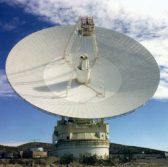 The Aerospace Corp. has launched a study that aims to make position, navigation and timing services more resilient through the development of a user-device platform that will work to combine PNT signals from multiple sources.
The Aerospace Corp. has launched a study that aims to make position, navigation and timing services more resilient through the development of a user-device platform that will work to combine PNT signals from multiple sources.
The nonprofit organization said Monday it will use an open-source method to develop a user-device system designed to collect PNT signals from navigation satellite systems, visual and inertial sensors, cell towers, radios and terrain maps under the Sextant study.
Randy Villahermosa, principal director of the research and program development office and study lead at Aerospace Corp., said the research team will work to determine how to safeguard PNT services from outages, explore cost and flexibility options as well as identify a method to speed up technology introduction through the Sextant study.
David Gorney, executive vice president at Aerospace Corp., said the team also aims to develop standards to facilitate the Sextant strategy.
“We do this by first understanding the needs of the government acquisition agencies, while at the same time maintaining strong technical ties to the industrial community,†Gorney said.
“In this way, we can develop draft specifications or standards, discuss these in industry or government forums, obtain feedback, and then ultimately help to publish or deploy the standards.â€
Researchers at Aerospace Corp. plan to discuss the Sextant strategy at the ION GNSS conference in September.
The Aerospace Corp. is a federally funded research and development center that provides acquisition management, engineering and technical assessment support for the U.S. Air Force, other Defense Department and civilian agencies.




